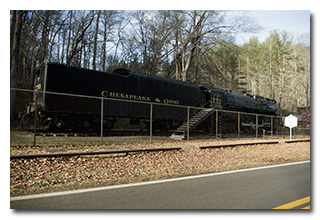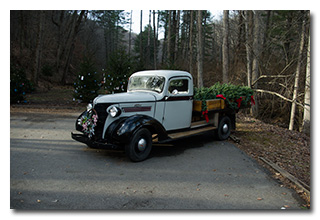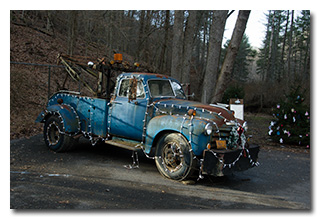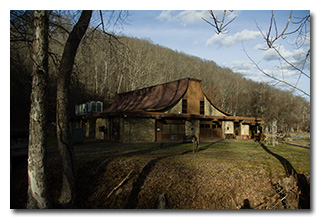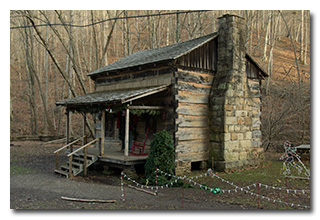
by William Eric McFadden
From the Chief Logan State Park website:
-
Surrounded by the beautiful mountains of southern West Virginia, Chief Logan State Park is a 4,000-acre haven with lodging, conference facilities, campgrounds, hiking trails and a variety of outdoor activities and attractions. Chief Logan State Park is one of the most visited facilities in the West Virginia State Parks System.
Like the surrounding town and county, Chief Logan State Park is named after Chief Logan, a leader of the Native American Mingo tribe who lived in the area before the American Revolutionary War. The park was designated a recreation area in 1960 and became part of the state parks system in 1968. The park also has historical ties to the Chesapeake and Ohio Railroad. A Kanawha 2700 Class locomotive, donated by the C&O Railroad in 1961, remains on display today.
Pictures
Description
On Friday, December 30, 2022, one member of the Southeast Ohio Radio Adventure Team performed a successful activation of Chief Logan State Park (K-1810) as part of the Parks on the Air (POTA; link) program.
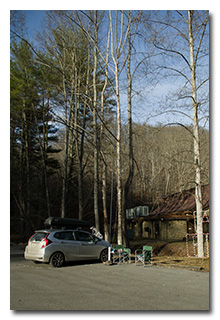 Suddenly finding himself forced to drive deep into southern West Virginia to take care of family business on
a beautiful, sunny, unseasonably warm (68°) late December day, Eric McFadden, WD8RIF, "made lemonade out
of lemons" and saved an otherwise bad day by visiting Chief Logan State Park for his first POTA activation of
this park. Although this park had been previously visited 229 times for POTA, and 14,800 POTA QSOs had been
made at this park, only twenty-four of these QSOs had been made with CW. Eric's completed activation was to
more than double that CW QSO count.
Suddenly finding himself forced to drive deep into southern West Virginia to take care of family business on
a beautiful, sunny, unseasonably warm (68°) late December day, Eric McFadden, WD8RIF, "made lemonade out
of lemons" and saved an otherwise bad day by visiting Chief Logan State Park for his first POTA activation of
this park. Although this park had been previously visited 229 times for POTA, and 14,800 POTA QSOs had been
made at this park, only twenty-four of these QSOs had been made with CW. Eric's completed activation was to
more than double that CW QSO count.
Eric was accompanied by his wife Vickie, KC8MAJ, and their two small dogs Theo and Ginny.
After taking care of the family business in Logan, West Virginia, Eric, Vickie, and the dogs arrived at the Chief Logan State Park Lodge for lunch slightly after 2 o'clock only to find the restaurant already closed for lunch. Deciding to foresake lunch, they continued farther into the park, looking for a suitable location to perform a POTA activation.
Upon seeing the Chesapeake & Ohio #2755 Class K-4 2-8-4 Kanawha locomotive on static display, Eric knew this was the place and chose the adjacent museum parking lot for his activation, noting an arrival time of around 1930 UTC. Eric had really hoped to use his Yaesu FT-817ND transceiver and 40m End-Fed halfwave antenna (EFHW) for this activation but, unfortunately, he was unable to find enough space at this location to safely deploy the 40m EFHW so he fell back to deploying his proven and trusty 28½' wire vertical on a 31' Jackite fiberglass telescoping mast on a drive-on base. Because the weather was so lovely, he deployed his Elecraft KX3 on his folding camp-chair at the base of the mast. Eric was on the air at 1940 UTC.
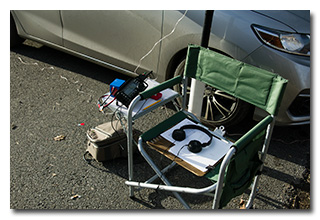 Having seen no cell-signal anywhere else in the park, Eric was surprised to find he had a tiny bit of cell-signal
at his chosen operating location, enough to text his buddies K4SWL and K8RAT that he was on-site and later to
verify he had been auto-spotted on the POTA Spots website.
Having seen no cell-signal anywhere else in the park, Eric was surprised to find he had a tiny bit of cell-signal
at his chosen operating location, enough to text his buddies K4SWL and K8RAT that he was on-site and later to
verify he had been auto-spotted on the POTA Spots website.
Eric began his operation by finding a frequency to run on 40m and calling CQ, and was quickly auto-spotted on POTA Spots. Eric's first QSO came at 1942 UTC with AD8EV in Ohio. QSOs came quickly, with Eric's tenth QSO coming at 1951 UTC with KE8HXE in Ohio. This run included a QSO with his buddy K8RAT in north-central Ohio and QSOs with operators located in Ohio (3), North Carolina (2), West Virginia, South Carolina, Illinois, and Virginia (2).
Eric then tried to consult POTA Spots to look for park-to-park (P2P) QSO opportunities but discovered to his dismay that his meager cell-signal had entirely disappeared.
Finding a frequency to run on 20m, Eric began calling CQ and hoped that he would be auto-spotted on POTA Spots. He must have been auto-spotted because his first QSO on 20m came at 1956 UTC with stalwart POTA Hunter AA5UZ in Louisiana and QSOs continued essentially non-stop until the twenty-third QSO in this run came at 2019 UTC with W5ON in Arkansas. This nice run included QSOs with operators located in Louisiana, Missouri, Florida (4), Connecticut (2), Wisconsin (2), Michigan, Texas (3), New York (2), Minnesota (2), New Brunswick, Illinois, Colorado, and Arkansas (2).
In all, Eric made thirty-three in about forty minutes of operating time. All of Eric's QSOs were CW and were made at five watts output.
Eric also submitted his log to the World Wide Flora and Fauna in Amateur Radio (WWFF; link) program for an operation at Strouds Run State Park, KFF-1994.
(return)
